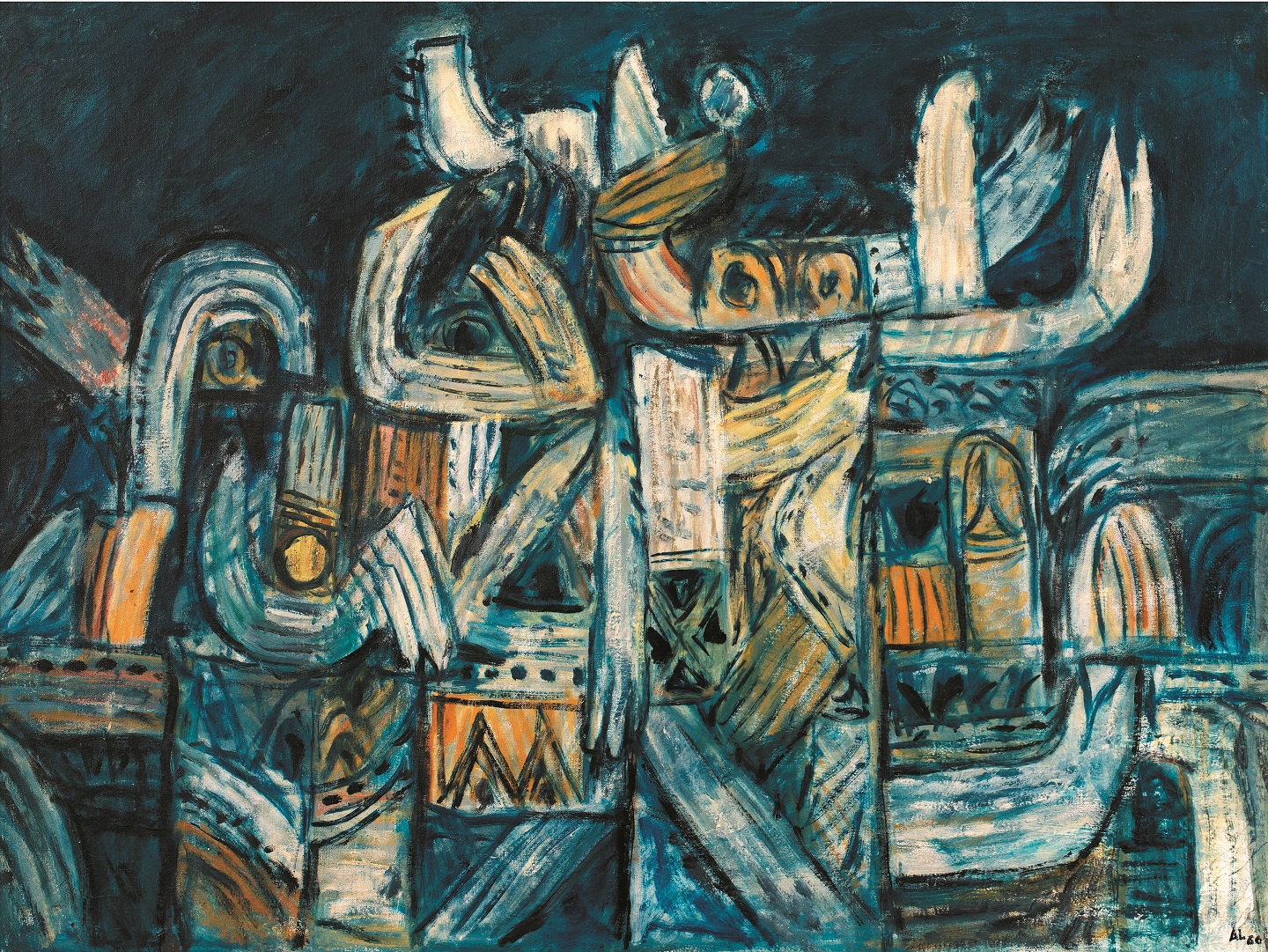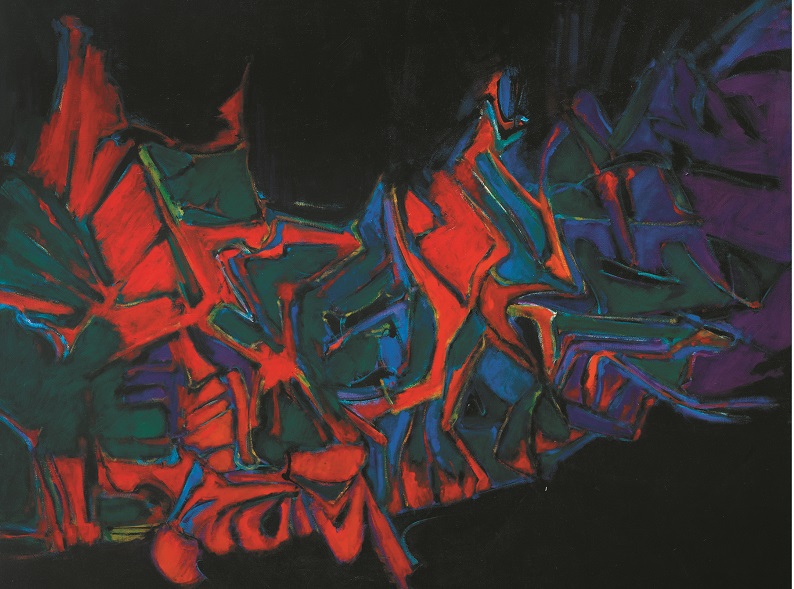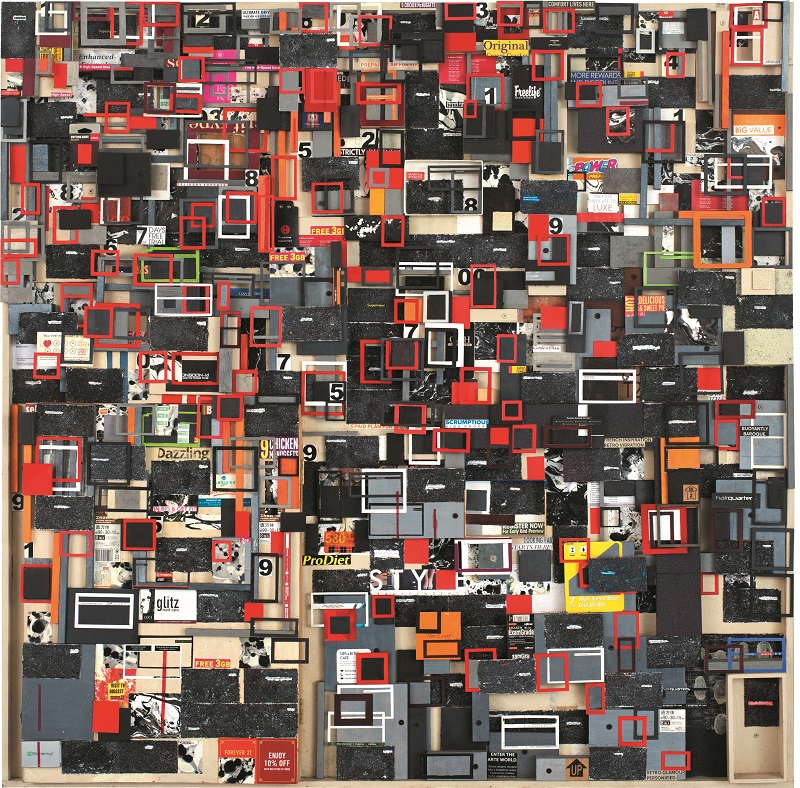
Pago-pago (1966) by Latiff Mohidin
At the opening of the Bank Negara Malaysia Museum and Art Gallery’s latest exhibition, Bank Negara governor Tan Sri Muhammad Ibrahim quoted Aristotle in his speech: “The aim of art is to represent not the outward appearance of things, but their inward significance.”
Yet, working out the meaning of abstract art is often a challenge for the average person, this writer included. But a good tip given to me in approaching abstract art is to start with the big picture, or macro viewpoint, after gleaning its objective.
It is apt, then, that the exhibition, titled The Unreal Deal: Six Decades of Malaysian Abstract Art, offers an overview in itself. Opened on Merdeka Day, the exhibition features 97 works by 28 Malaysian artists. Like the 60th anniversary of the nation, it celebrates an anniversary of sorts — covering the journey of Malaysian abstract art from the 1960s until now in what is the largest survey of the genre to date.
As the exhibition’s name suggests, The Unreal Deal invites the viewer to temporarily suspend reality and enter into the world of symbolism, where the narrative of this country’s fine art development is told in a visual language of its own. Beyond a rare chance to see early artworks by these pioneering masters, it is special to see first-hand the evolution of their artistic practices — all laid out on the wall in this showcase.
Accompanying that is the historical background that is very much tied to the growth and transformation of a young nation. We start with the 1960s, which traces the dawn of a new decade in Malaysia’s cultural development. Specifically, we are pointed to The Specialist Teachers’ Training Institute in Cheras then, which saw pioneering artists such as Yeoh Jin Leng and Datuk Syed Ahmad Jamal establish their teaching careers after returning from overseas. Their presence sparked artistic growth and the eventual establishment of Malaysia’s first art department, producing teachers and artists such as Redza Piyadasa, Ahmad Khalid Yusof and Chew Teng Beng.
The Wednesday Art Group — of which Syed Ahmad was a member along with Cheong Laitong, Khalil Ibrahim, Patrick Ng Kah Onn, Jolly Koh and more — was also influential. Some of the artists would later go on to teach at the Malaysian Institute of Arts when it opened in 1966, and Institut Teknologi Mara in 1977.

One of the first pieces in the chronologically arranged exhibition is Syed Ahmad’s 1963 work, Kingfisher. It would be one of his last works in oil on canvas before he switched to using acrylic. Be it Ibrahim Hussein, Latiff Mohidin or Cheong Laitong, we see explorations of themes and styles that would later become their hallmarks.
In the 1970s and 1980s, what was tentative became full-fledged, as Malaysian artists pushed back creative boundaries, bearing in mind that many of the works were considered avant-garde at the time.
By then, the National Art Gallery was at the centre of the action in promoting Malaysian artists, with retrospective exhibitions for Latiff Mohidin and Syed Ahmad in 1973 and 1975 respectively. Government and corporate support grew, with prominent collectors also coming into play, which helped cultivate a vibrant art ecosystem as younger artists such as Yusof Ghani, Fauzan Omar, Ismail Latiff and Awang Damit Ahmad began to rise to prominence.
On one wall is a series of prominent academician Choong Kam Kow’s colourful puzzle-like works, while a unique piece by Latiff Mohidin, Langkawi (1977), is a wood-hanging that resembles a boat and the sea. Ibrahim Hussein experiments with an uncharacteristic all-white work with Jawi etchings that looks timeless and contemporary even today. Also rather different from his later works is Awang Damit’s Essence of Culture “Ingatan Waktu Kecil” (1987), a mixed-media piece drawing inspiration from childlike scribbles.
Awang Damit would continue to develop his nature-inspired images in the 1990s, joined by fellow nature lovers Suzlee Ibrahim, Jack Ting and Nizar Kamal Ariffin. Bold colours would emerge in Sharifah Fatimah’s play on shapes and patterns, while Yusof Ghani’s dance and theatre “figures” would become more and more defined by vivid hues and bold strokes.
Many of these developments carried on into the millennium, where a new generation and expression of abstraction in art could be clearly seen. Urban life and globalisation have a strong influence on post-2000 artworks, and coincidentally themes of development and politics grew more critical and ardent in tone.

Artists such as Hamidi Hadi, Saiful Razman, Yeoh Choo Kuan, Ajim Juxta, Zulkifli Lee, Sabri Idrus, Haffendi Anuar and Choy Chun Wei now come to the forefront among other established abstractionists such as Ting and Suzlee. Where abstraction has become commonplace and less popular than newer disciplines, these young and mid-career artists are among the few who remain loyal to the abstract idiom.
Nevertheless, the innovative spirit is ever present, be it in objective and in form. Just a glance at the play of materials reveals a broader horizon. But, perhaps what is most promising - as gleaned from the exhibition - is the fact that there is a legacy that creates the path along which this generation of artists are walking.
Saiful Razman’s Runtuh Satu Bangun Seribu (2016), a collage made from toilet paper, medical gauze and polyvinyl adhesive, is a critical response to the neglect and controversial demolition of Syed Ahmad’s sculpture, Puncak Purnama, last year. The long-standing sculpture was taken down to make way for a new garden area in Jalan Sultan Sulaiman. More poignantly, Sabri Idrus’ Remembrance (Ibrahim Hussein) (2009) commemorates the famed artist’s passing, which happened in the middle of the creation of the painting.
The longevity of abstract art may have been doubted and disregarded, but its roots would seem to grow deep, as these last six decades have shown.
The Unreal Deal: Six Decades of Malaysian Abstract Art is ongoing until Jan 21, 2018. Admission is free. Bank Negara Malaysia Museum and Art Gallery is open from 10am to 6pm daily, except on public holidays. For more details, visit www.museumbnm.gov.my.


